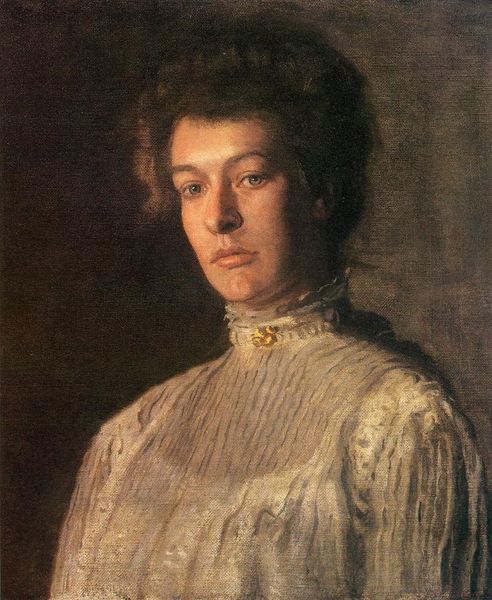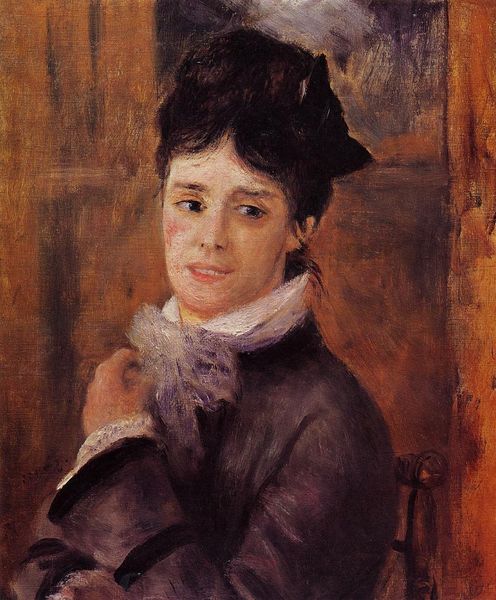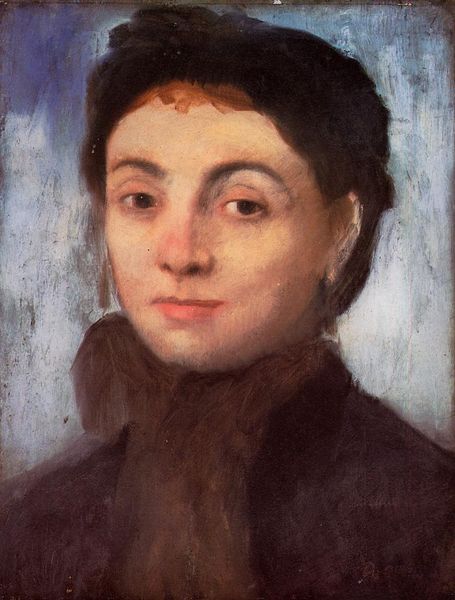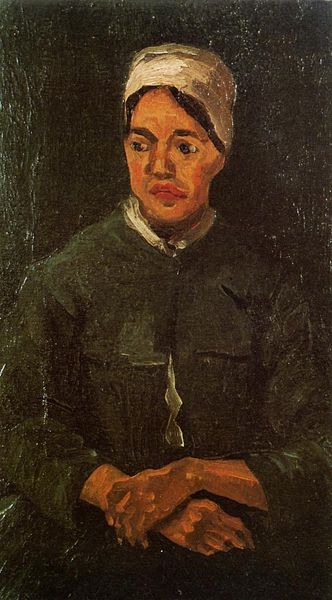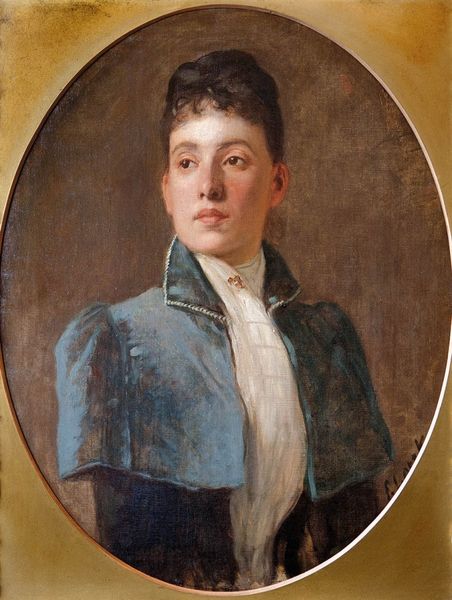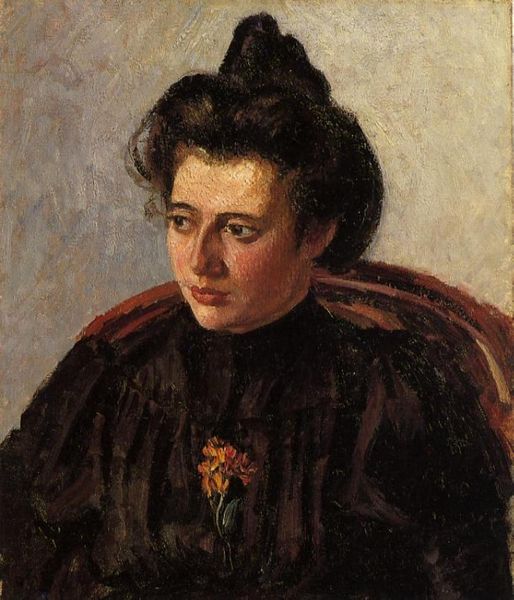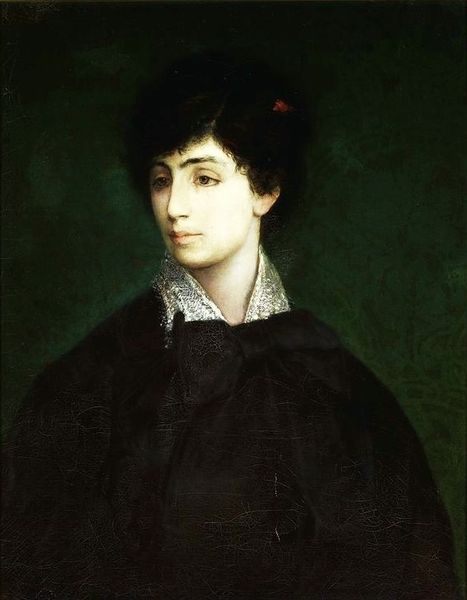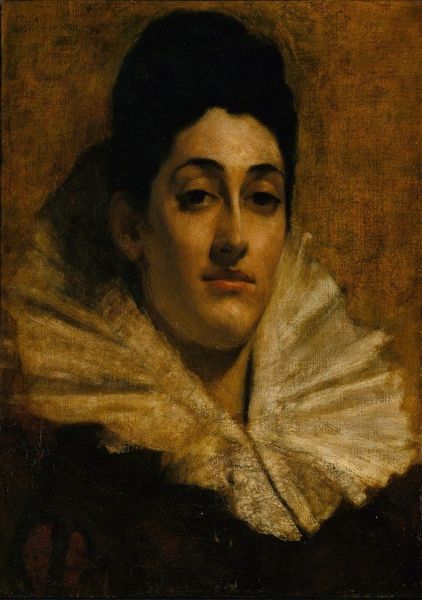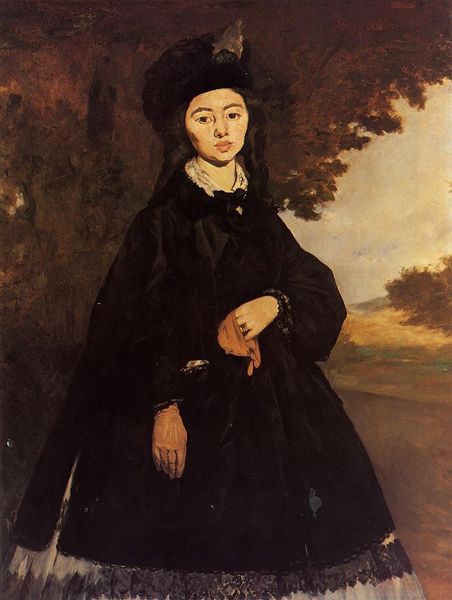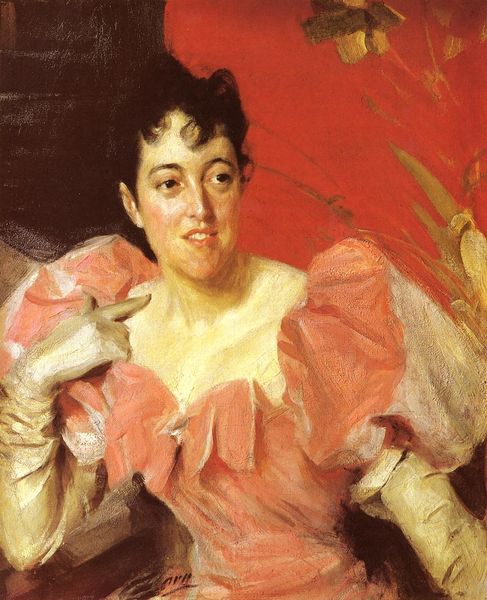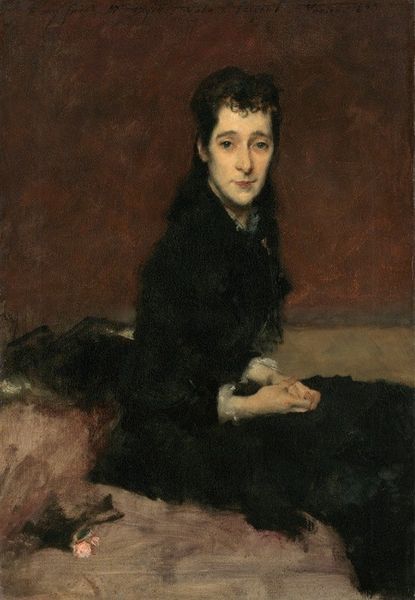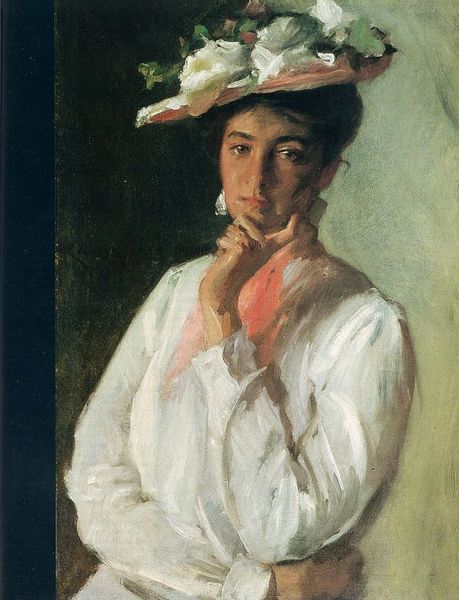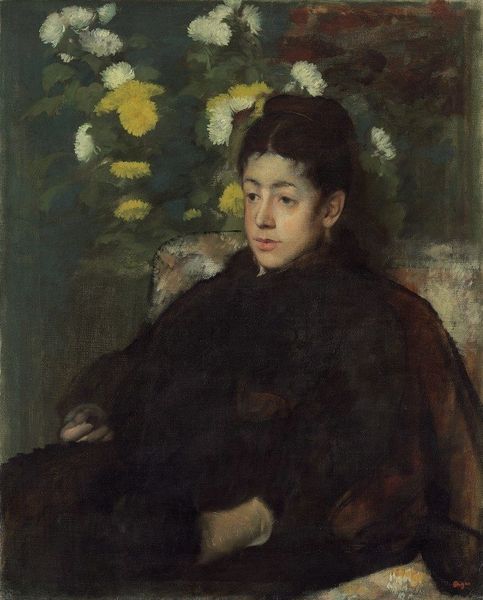
painting, oil-paint
#
portrait
#
painting
#
impressionism
#
oil-paint
#
oil painting
Copyright: Public domain
Curator: Looking at this 1876 painting by Edgar Degas, titled "Woman with an Umbrella," one immediately senses a portrait caught between the fleeting moment and formal representation. What do you see? Editor: An intriguing combination of detachment and focus, I’d say. The brushwork is so loose, almost unfinished in places, especially in the background. The tonality is almost monochromatic, like a faded memory. Her stare confronts the viewer with palpable directness though. Curator: Precisely. Degas was fascinated by modern life, particularly the lives of women in Parisian society. We see her dressed rather formally, hat and scarf included, for perhaps an outing in the city, as the umbrella suggests. This is hardly a grand commission though. What social narratives does it bring to your mind? Editor: The limited palette really controls the piece, mostly hues of grays and creams that unify her figure with the nebulous ground. But there is this tension created by that umbrella – it introduces a diagonal line that clashes in dynamic counterpoint against the vertical emphasis of her pose and even the strokes above her head. Curator: A clash that perhaps mirrors the social tensions inherent in representing a woman navigating public space. Note Degas' break from traditional portraiture; he captures movement and a sense of everyday life, eschewing idealization. He places her firmly in her social environment even if this environment is but merely suggested through loose brush strokes, as you’ve indicated. Editor: You know, that unresolved, somewhat provisional state may actually reinforce its presence in the end. The soft brush strokes don't let my eyes focus on a definite shape. It’s as if form itself becomes a mutable entity here. Curator: And that mutability, I argue, serves as a visual metaphor for the changing roles of women and the societal pressures of the time. This wasn’t about presenting a timeless image, but reflecting on transient experience of modernity. Editor: True enough, though I also think about painting and image-making as ephemeral too. This canvas asks us, as viewers, to participate in its visual resolution. We too must constantly interpret and find order in the loosely sketched information it presents. Curator: Well said. A potent reminder of art's ongoing conversation with both its subject and its audience. Editor: I quite agree. Every visit yields fresh perceptions.
Comments
No comments
Be the first to comment and join the conversation on the ultimate creative platform.
